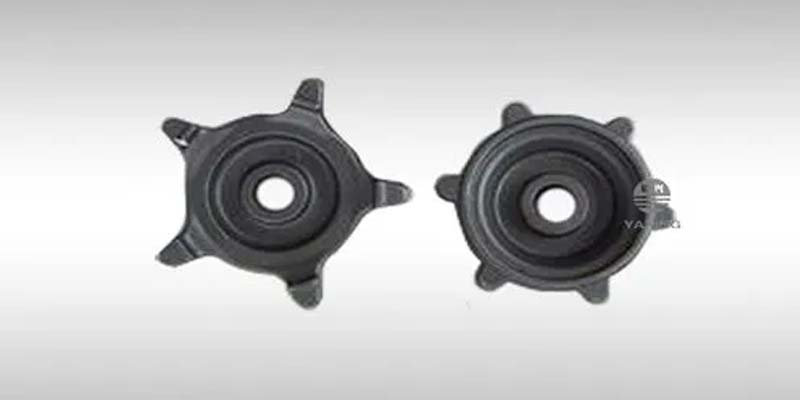- Contact Innally, Let you purchase forgings in China more favorable prices, products more assured!
- Hotline:+(86)15038323776 Email:innally@innally.com
The influence of material selection and heat treatment on the performance of motorcycle forging
- Category: Motorcycle forging, Titanium alloy forging
- |
- Date: 09/10/2023
Through the above heat treatment process, the motorcycle crankshaft of this model has been significantly improved in terms of strength and toughness, thus improving the driving safety and service life of the motorcycle.
Product Details
In the manufacturing process of motorcycles, the choice of forging materials and heat treatment have a crucial impact on the performance of the final product.
First, material selection
The choice of motorcycle forging materials plays a fundamental role in its performance. Different materials have different mechanical properties, such as strength, toughness, hardness, etc., and these performance indicators directly determine the safety and service life of motorcycles.
Carbon steel: Carbon steel is a common motorcycle forging material, with good strength and toughness, but poor corrosion resistance. When selecting carbon steel, attention should be paid to the carbon content of steel, too high or too low carbon content will have a negative impact on the weldability and mechanical properties of the material.
Alloy steel: Alloy steel is carbon steel that has added other elements, such as manganese, silicon, phosphorus, etc., to improve its performance. Alloy steel has good strength, toughness and corrosion resistance, so it is widely used in motorcycle forging manufacturing.

High temperature stainless steel: High temperature stainless steel has good high temperature resistance and corrosion resistance, suitable for manufacturing motorcycle forgings working in high temperature environment. However, the price of high temperature stainless steel is higher and the processing is more difficult.
Second, heat treatment process
Heat treatment process is the key link to determine the performance of motorcycle forgings. Through proper heat treatment, the hardness, strength and toughness of the material can be significantly improved, thus extending the driving distance and safety of the motorcycle.
Heating temperature: The heating temperature of the heat treatment has a great impact on the structure and properties of the material. Too low temperature will cause the material to fail to fully austenitizing, and too high temperature may lead to excessive oxidation or burning of the material. Therefore, choosing the appropriate heating temperature is very important to improve the performance of forging.
Holding time: Holding time determines the residence time of the material at high temperature, which directly affects the organization and properties of the material. If the holding time is too short, the material may not fully absorb heat, resulting in uneven organization; If the holding time is too long, it may cause excessive oxidation and burning of the material.
Cooling method: The choice of cooling method is also related to the final performance of the material. Different cooling rates will lead to different phase change microstructure and mechanical properties of the material. For example, rapid cooling can obtain high hardness and high strength, but may lead to a decrease in material toughness; Slow cooling helps to improve the toughness of the material.
- Case analysis
Taking a certain type of motorcycle crankshaft as an example, it is subject to strong impact and vibration during use, so the material is required to have high strength and toughness. After comparative analysis, alloy steel was selected as the crankshaft material, and the following heat treatment process was carried out:
The alloy steel crankshaft is heated at 850℃ for 2 hours to make the material fully austenitic;
Heat for 10 minutes to keep the material uniform at high temperature; The crankshaft is quickly dropped into water to cool for high hardness and strength.
Through the above heat treatment process, the motorcycle crankshaft of this model has been significantly improved in terms of strength and toughness, thus improving the driving safety and service life of the motorcycle.
nannan
INNALLY website editing, to provide you with forging related information
Related Products
Search
Forging center
- Steel forgings
- Aluminium alloy forging
- Titanium alloy forging
- Stainless steel forging
- Copper forging
- Automotive forgings
- Locomotive forging
- Bicycle forgings
- Motorcycle forging
- Rigging and fasteners
- Bearing forging
- Electric power fittings
- Marine forging
- Mechanical forgings for metalworking
- Mining machinery forgings
- Marine engineering forgings
- Construction machinery forgings
Popular product

© 2025. All Rights Reserved.






